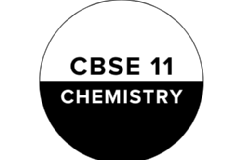Will be covering syllabus of cbse class 11 economics. Including statistics part A , followed by part B introductory micro economics
worksheet to follow each session .
I can do morning schedule
from 9-10
Or 3-4
3 days a week or two days a week as per majority choice
Part A: Statistics for Economics
Unit 1: Introduction
- What is Economics?
- Meaning, scope, functions and importance of statistics in Economics
Unit 2: Collection, Organisation and Presentation of Data
- Collection of data – sources of data – primary and secondary; how basic data is collected with concepts of Sampling; methods of collecting data; some important sources of secondary data: Census of India and National Sample Survey Organisation.
- Organisation of Data: Meaning and types of variables; Frequency Distribution.
- Presentation of Data: Tabular Presentation and Diagrammatic Presentation of Data: (i) Geometric forms (bar diagrams and pie diagrams), (ii) Frequency diagrams (histogram, polygon and Ogive) and (iii) Arithmetic line graphs (time series graph).
Unit 3: Statistical Tools and Interpretation
- Measures of Central Tendency- Arithmetic mean, median and mode
- Statistical Tools and Interpretation
- Measures of Dispersion – absolute dispersion standard deviation); relative dispersion coefficient of variation)
- Correlation – meaning and properties, scatter diagram; Measures of correlation – Karl Pearson’s method (two variables ungrouped data)
- Introduction to Index Numbers – meaning, types – wholesale price index, consumer price index, uses of index numbers; Inflation and index numbers
Part B: Introductory Microeconomics
Unit 4: Introduction
- Meaning of microeconomics and macroeconomics; positive and normative economics
- What is an economy? Central problems of an economy: what, how and for whom to produce; opportunity cost.
Unit 5: Consumer’s Equilibrium and Demand
- Consumer’s equilibrium – meaning of utility, marginal utility, law of diminishing marginal utility, conditions of consumer’s equilibrium using marginal utility analysis.
- Indifference curve analysis of consumer’s equilibrium-the consumer’s budget (budget set and budget line), preferences of the consumer (indifference curve, indifference map) and conditions of consumer’s equilibrium.
- Demand, market demand, determinants of demand, demand schedule, demand curve and its slope, movement along and shifts in the demand curve; price elasticity of demand – factors affecting price elasticity of demand; measurement of price elasticity of demand – percentage-change method.
- Unit 6: Producer Behaviour and Supply
- Meaning of Production Function – Short-Run and Long-Run Total Product, Average Product and Marginal Product.
- Returns to a Factor
- Cost: Short run costs – total cost, total fixed cost, total variable cost; Average cost; Average fixed cost, average variable cost and marginal cost-meaning and their relationships.
- Revenue – total, average and marginal revenue – meaning and their relationship.
- Supply, market supply, determinants of supply, supply schedule, supply curve and its slope, movements along and shifts in supply curve, price elasticity of supply; measurement of price elasticity of supply – percentage-change method.
-
Unit 7: Forms of Market and Price Determination Under Perfect Competition with Simple Applications
- Perfect competition – Features; Determination of market equilibrium and effects of shifts in demand and supply.
- Simple Applications of Demand and Supply: Price ceiling, price floor.






